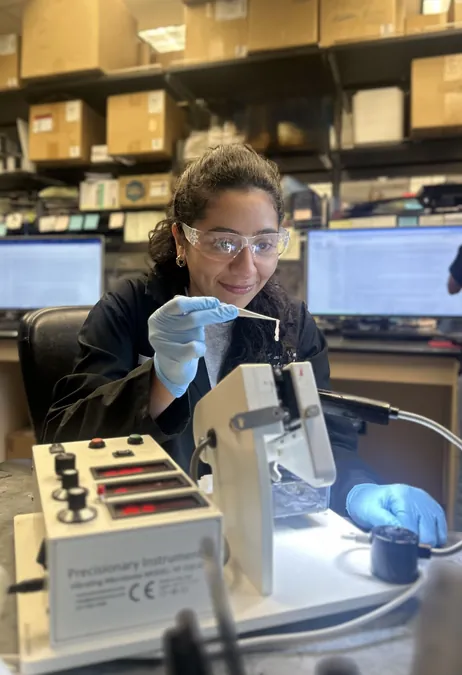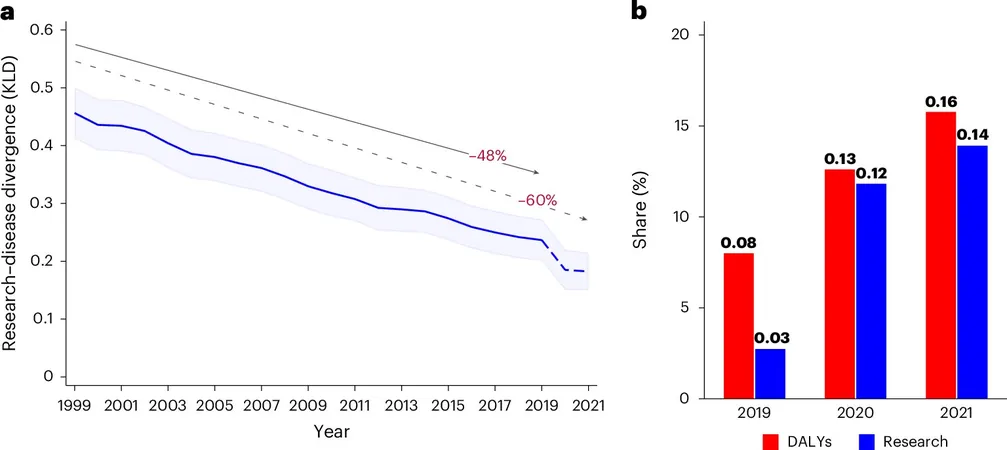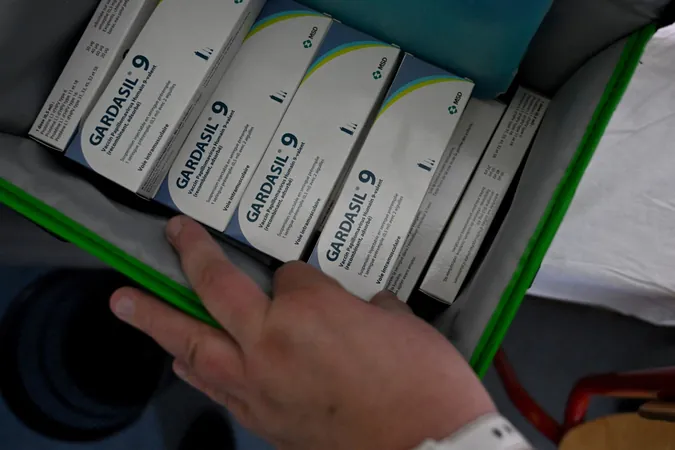
Unlocking the Secrets of Lung Fibrosis: A Revolutionary New Approach
2025-09-05
Author: Sarah
The Silent Struggle of Lung Fibrosis
Lung fibrosis is often a stealthy adversary, creeping up on patients until it's too late for effective treatment. By the time they receive a diagnosis, their lung tissue is usually severely scarred, leaving current treatments to merely slow the progression of the disease rather than reverse it. But what if we could catch fibrosis at its inception and alter its course?
A Pioneering Investigation
Claudia Loebel, a leading Bioengineering professor, alongside doctoral student Donia Ahmed, is on an ambitious quest to unravel the earliest stages of this debilitating condition. Their groundbreaking research, published in *Nature Materials*, collaborates across prestigious institutions including the University of Pennsylvania, the University of Michigan, and Drexel University.
Traditionally, most studies focus on the later stages of fibrosis, where actual tissue damage is evident. Loebel and Ahmed decided to turn the narrative around, investigating how minute changes in the mechanical properties of lung tissue could trigger the onset of fibrosis.
Illuminating the Mechanism with Light
Employing an innovative technique called photochemical cross-linking, the research team exposed lung tissues to harmless blue light. This process stiffened the extracellular matrix, the supportive framework surrounding cells, allowing the researchers to study its effects on healthy lung tissues from both mice and humans.
"Imagine the extracellular matrix as loose hair tied into a ponytail," Ahmed explains. "With our method, we tighten it just enough to simulate the kind of minor injuries that could lead to fibrosis." This fresh perspective focuses on living, intact samples, which preserves natural tissue responses, making their findings even more relevant.
Caught in Transition: Cellular Identity Crisis
As the blue light caused the tissue to stiffen, Ahmed noted a perplexing reaction: the cells began to stretch and reshape, signaling a transition to a different cell type. However, they became trapped in a limbo between identities, unable to function efficiently.
These "transitional" cells have been found in fibrotic tissues before, but this study unveils how they originate. The researchers propose that changes in tissue stiffness can initiate this transition, setting off a potentially harmful feedback loop that accelerates the disease's progression.
To illustrate, think of a flexible play tunnel. When it's soft, it's easy to navigate. But if it becomes rigid, movement becomes restricted. Similarly, stiffened tissue can trap cells, hinder their function, and attract more damaging cells, creating a vicious cycle.
A Mechanical Challenge with Biological Consequences
While the biology of fibrosis has been explored extensively, this study pivots to view it as a mechanical issue. Ahmed emphasizes, "It’s not just about chemistry; the physical environment plays a crucial role." Using advanced engineering tools, the researchers quantified the stiffness of lung tissue, opening new avenues for understanding disease mechanisms.
Looking Ahead: The Next Steps
The researchers propose that the transitional cells identified in their study may act as precursors to further fibrotic development, harming the lung environment even more. While the current study concentrated on epithelial cells, they plan to broaden their research to include other critical components involved in fibrosis, such as macrophages and fibroblasts.
Blueprint for Future Treatments
Ultimately, the goal is to translate these insights into preventive strategies. Understanding the mechanics behind the early stages of fibrosis could lead to predictive measures for at-risk individuals and more effective interventions.
"We’re not attempting to recreate fibrosis in a controlled setting; we're focused on pinpointing the starting point of the disease," says Loebel. "By understanding the first responders in this process, we can develop therapies that halt the cascade before it begins."



 Brasil (PT)
Brasil (PT)
 Canada (EN)
Canada (EN)
 Chile (ES)
Chile (ES)
 Česko (CS)
Česko (CS)
 대한민국 (KO)
대한민국 (KO)
 España (ES)
España (ES)
 France (FR)
France (FR)
 Hong Kong (EN)
Hong Kong (EN)
 Italia (IT)
Italia (IT)
 日本 (JA)
日本 (JA)
 Magyarország (HU)
Magyarország (HU)
 Norge (NO)
Norge (NO)
 Polska (PL)
Polska (PL)
 Schweiz (DE)
Schweiz (DE)
 Singapore (EN)
Singapore (EN)
 Sverige (SV)
Sverige (SV)
 Suomi (FI)
Suomi (FI)
 Türkiye (TR)
Türkiye (TR)
 الإمارات العربية المتحدة (AR)
الإمارات العربية المتحدة (AR)